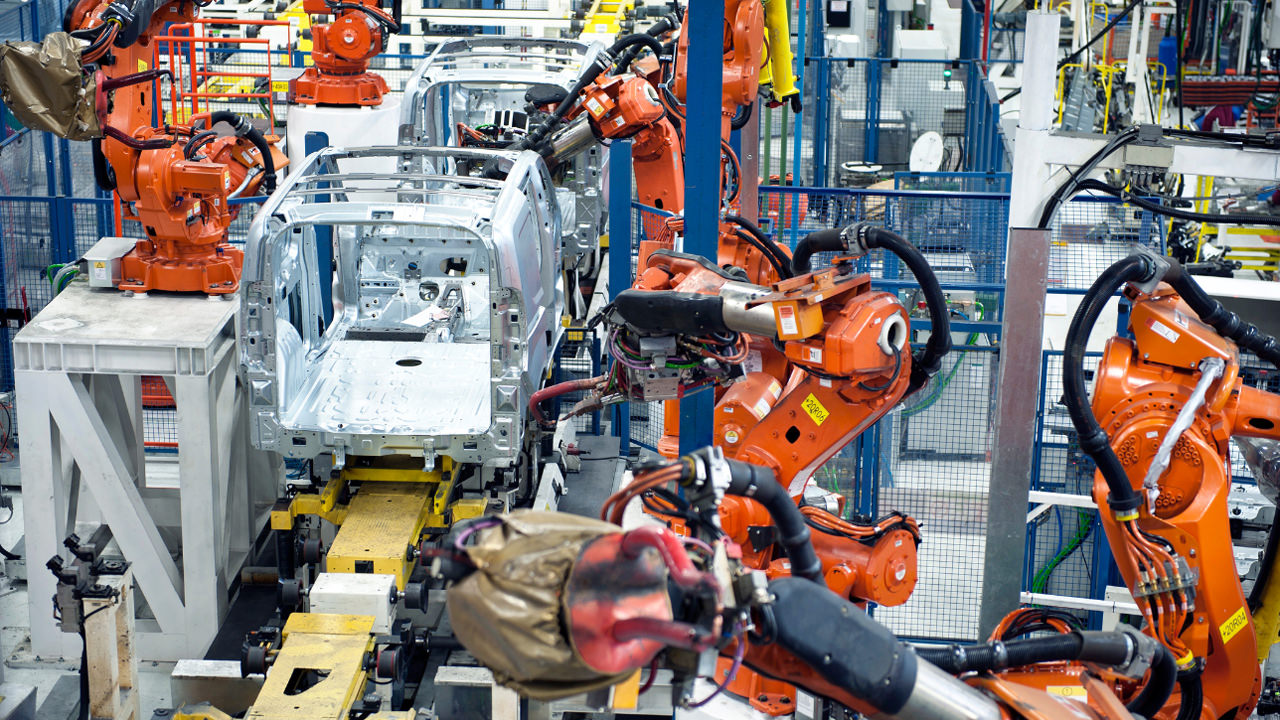TechnologyJuly 21, 2023
Emergence of Time-Sensitive Networking Q&A

The transition is not happening overnight but industry leaders from Avnu Alliance continue to emphasize the possibilities with Time-Sensitive Networking (TSN) converged networking technology.
The role of TSN in smart manufacturing is continuing to evolve as users and suppliers learn how applications can benefit from converged networking.
Dave Calvacanti, President of the Avnu Alliance and Jack Lin, product manager and project lead of Moxa’s Global TSN Initiative, joined together to answer questions on the future of TSN, technology benefits that are driving it forward and how it will affect the automation applications landscape.
 Why is Time Sensitive Networking (TSN) so important in IIoT systems?
Why is Time Sensitive Networking (TSN) so important in IIoT systems?
Dave Calvacanti, President, Avnu Alliance: The IIoT is moving beyond single-function networks to realize the benefits of a converged network foundation with the coexistence of different traffic types on the same physical network. Critical and non-critical traffic have previously been kept separate for operational integrity, real-time performance, safety, or security reasons, but TSN provides the tools to enable their convergence. This allows for the exchange of real-time control, telemetry, and general IT information, all managed securely by IT and OT. This will reduce infrastructure costs and the resources needed to manage and maintain the network. This breaking down of communication barriers between critical and noncritical systems is a foundational concept enabled by TSN for the future of the Industrial Ethernet.
Jack Lin, product manager and project lead of Moxa’s Global TSN Initiative: TSN is an advanced technology that helps industry leaders accelerate their digital transformation in industrial automation. TSN offers time synchronization, low-latency communications, ultra-reliability, and better resource management. This facilitates the merging of IT and OT networks to connect all end devices and centralize data collection on a standard Ethernet network. Digital transformation can be achieved by real-time information made possible by TSN, enabling factories to optimize their production strategies for fast-changing markets and emerging challenges.
What are some typical use cases that demonstrate the benefits of having both standard Ethernet traffic and time-critical traffic coexisting in a converged network?
Calvacanti: Factory automation, process automation, motion control, predictive maintenance, and professional audio-video are all applications that can benefit from converged networking. One example could be an automated robotic arm with a safety trigger to cease operation should an operator come too close. The operation of the robotic arm itself requires deadline-based delivery of control traffic and sensor feedback, with a control cycle that could be in the 100s or even 10s of microseconds. The safety trigger has a less onerous cycle but obviously the alarm generated when the trigger is activated is the most essential feature of all. Alongside these types of traffic is operational monitoring of both the arm and trigger, which is important for keeping tabs on operational health, statistic gathering and predictive maintenance.
Lin: The operating company of a hydropower plant was determined to bring all their isolated networks together and implement an AI system for their control network by embracing the TSN standard, which was a perfect fit for this kind of use case, as performing services on a converged network was much easier than on disparate networks. The hydropower plant improved efficiency and the ability to quickly adjust the total power output to the grid as needed, giving rise to a new hydropower plant with lower costs, easier maintenance, higher efficiency, and improved adaptability.
What are the current barriers to adoption of the TSN technology in IIoT settings?
Lin: Like any new technology adoption, it will happen like a transition but won’t turn out overnight. The good news is many of the significant industrial protocols, such as PROFINET, EtherNet/IP, CC-Link, and OPC Foundation announcing support for TSN, and the ecosystem is moving forward. It may seem chaotic, but it is exciting to see where and how TSN is used in pilots and early implementations. One balance we are trying to strike concerning TSN adoption is between investing for the future and meeting current market demands, as those forces are frequently in conflict. Like any new technology adoption, this will happen as a transition and not overnight but with many of the large industrial protocols such as Profinet, EtherNet/IP, CC Link and OPC Foundation announcing support for TSN, the ecosystem is moving forward. It can seem a bit chaotic, but it is also an exciting time to see where and how it is being used in early pilots and implementations. One balance we are trying to strike with regard to TSN adoption is between investing for the future and meeting current market demands, as those forces are frequently in conflict.
Calvacanti: Rapid globalization and digital transformation have led to industrial operators adopting IIoT applications to enhance operational efficiency and maximize revenue. Amidst such a rush, getting everyone on the same page is obviously a challenge. Transitioning from proprietary protocols and network to standards-based wired and wireless network is the major barrier to overcome.
What role does Moxa play in the IIoT, specifically with regard to TSN?
Lin: To help our customers rapidly enter the IIoT world, Moxa provides secure, reliable, and easy-to-use sensor-to-cloud IIoT solutions that can effortlessly transform data into actionable insights, and our experience in connectivity for industrial automation enables us to optimize communication and collaboration between systems, processes, and people. As one of the pioneers in developing TSN standards, Moxa has committed to collaborating with key industry players and customers to bridge the gap between standard Ethernet and industrial applications and to speed up the cross-vendor interoperability of automation components in automation systems. We’re involved in many TSN standardization projects worldwide and we launched the industry’s first TSN-enabled switch with all ports supporting TSN in 2018.
What will be the impact of Moxa joining the Avnu Alliance?
Lin: Membership in Avnu aligns with our global strategies and our vision for TSN as the network for the future of industrial automation, as both of us are members of the TSN Industrial Automation Conformance Collaboration (TIACC), the industrial industry initiative to drive TSN interoperability. Avnu and Moxa have many synergies with our work in TIACC and our shared goal of interoperability and coexistence in open, standard networks.
We’re excited to begin collaborating freely with fellow Alliance members to develop interoperable TSN products and further enable an ecosystem where devices from different manufacturers, which support different automation protocols, will coexist reliably over wired and wireless TSN on a unified network infrastructure for communications at all levels.
Calvacanti: Moxa’s joining shows great promise, focusing on working on a truly unified and high-performance network infrastructure that permits all types of traffic to coexist for real-time communication, low latency, and high reliability requirements in diverse applications.
Moxa also has shown a deep commitment to driving network convergence and interoperability through its work with the TIACC and participation in industry TSN test beds, and they bring over a half-decade of experience developing TSN infrastructure to the Avnu Alliance. As the first Taiwan-based company and the newest promoter member company of Avnu, Moxa will take the reach of the Avnu interoperability ecosystem further to
the Asia Pacific region, specifically Taiwan and China.


